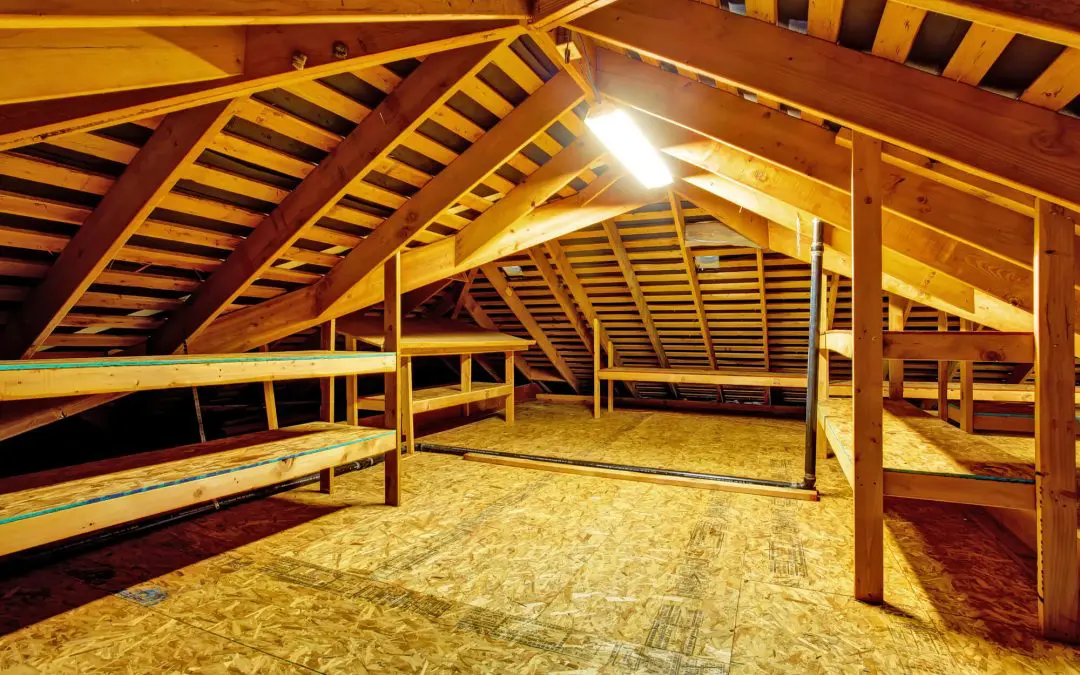When it comes to increasing energy efficiency, boosting storage, or even expanding usable space, few areas of the home hold more potential than the attic. With the right attic improvements, this space can become a major asset, not only improving your home’s comfort but also its value. Whether you’re looking to insulate your home better, improve air quality, or even convert the attic into a livable space, you can make several impactful changes.
Why Attic Improvements Matter
Understanding the benefits of strategic attic improvements starts with recognizing your attic’s role in your home’s overall performance. Your attic is the buffer zone between your living space and the elements. It can become a major source of energy loss, moisture buildup, and even pest problems without proper insulation, ventilation, and structural integrity.
Improving your attic doesn’t always mean turning it into an extra bedroom. Sometimes, it’s about making small changes that result in better air circulation, which leads to improved temperature regulation and lower utility bills.
Insulation: The Foundation of a Well-Improved Attic
Insulation is one of the most essential attic improvements you can make. A well-insulated attic helps keep your home warm in the winter and cool in the summer by reducing heat transfer. Over time, insulation can settle, become compressed, or be damaged by moisture or pests.
Upgrading your attic insulation means your HVAC system doesn’t have to work harder than necessary and will prevent issues like ice dams in the winter. Common insulation materials include fiberglass batts, blown-in cellulose, or spray foam—each with its own benefits, depending on your home’s needs and climate.
Attic Ventilation Enhancements
Proper ventilation is essential to maintaining healthy airflow throughout the attic. Without it, warm, moist air can become trapped, creating the perfect environment for mold, mildew, and wood rot. Effective attic improvements include evaluating your current ventilation system and ensuring a balance between intake and exhaust.
Installing or upgrading ridge vents, soffit vents, or even adding attic fans can significantly improve air circulation. This will protect the structural integrity of your home and help maintain a more consistent temperature indoors year-round.
Attic Improvements for Flooring and Storage
Adding flooring to create more accessible storage is one of the easiest and most cost-effective attic improvements. Installing durable panels or subflooring over joists allows you to use the space safely for bins, boxes, and seasonal décor without risking damage to insulation or wiring.
Be sure to consult a professional before making major changes. Adding flooring increases load-bearing demands, and knowing whether your attic can handle the weight is important.
Sealing Gaps and Air Leaks
Sealing air leaks around pipes, vents, chimneys, and other attic penetrations can drastically improve your home’s energy efficiency. These gaps are often hidden but can let in drafts, moisture, and even pests. Sealing is a relatively quick but high-impact project.
Consider a Full Attic Conversion
If your attic has the right structure, converting it into a livable space can significantly increase your home’s square footage and resale value. A full conversion requires thoughtful planning around lighting, plumbing, HVAC, and structural reinforcement, but it’s one of the most rewarding attic improvements for both functionality and return on investment.
Attic improvements don’t just make your home more comfortable—they make it smarter, healthier, and more efficient. Whether you’re focused on energy savings, storage solutions, or creating additional living space, investing in your attic is a step that can pay off for years to come.
FAQs About Attic Improvements
How do I know if my attic needs better insulation?
If your home feels drafty, your energy bills are unusually high, or you notice temperature fluctuations between rooms, your attic insulation might need upgrading.
Is attic ventilation really that important?
Yes. Good ventilation prevents moisture buildup, reduces the risk of mold, and helps keep your roof and attic materials in good condition over time.
Can I use my attic for storage without finishing it?
Absolutely. Adding a secure, weight-bearing floor is often all you need to create a practical and organized storage area.
What’s the best type of insulation for attics?
It depends on your goals and climate. Fiberglass, cellulose, and spray foam all have unique advantages. A professional can help determine the best choice for your home.
Is an attic conversion worth the investment?
For many homeowners, yes. A properly finished attic can add significant usable space and value, especially when done with permits and in compliance with local codes.
Robertson Home Inspection offers home inspection services in the Piedmont Triad of North Carolina. Contact us to schedule an appointment.

